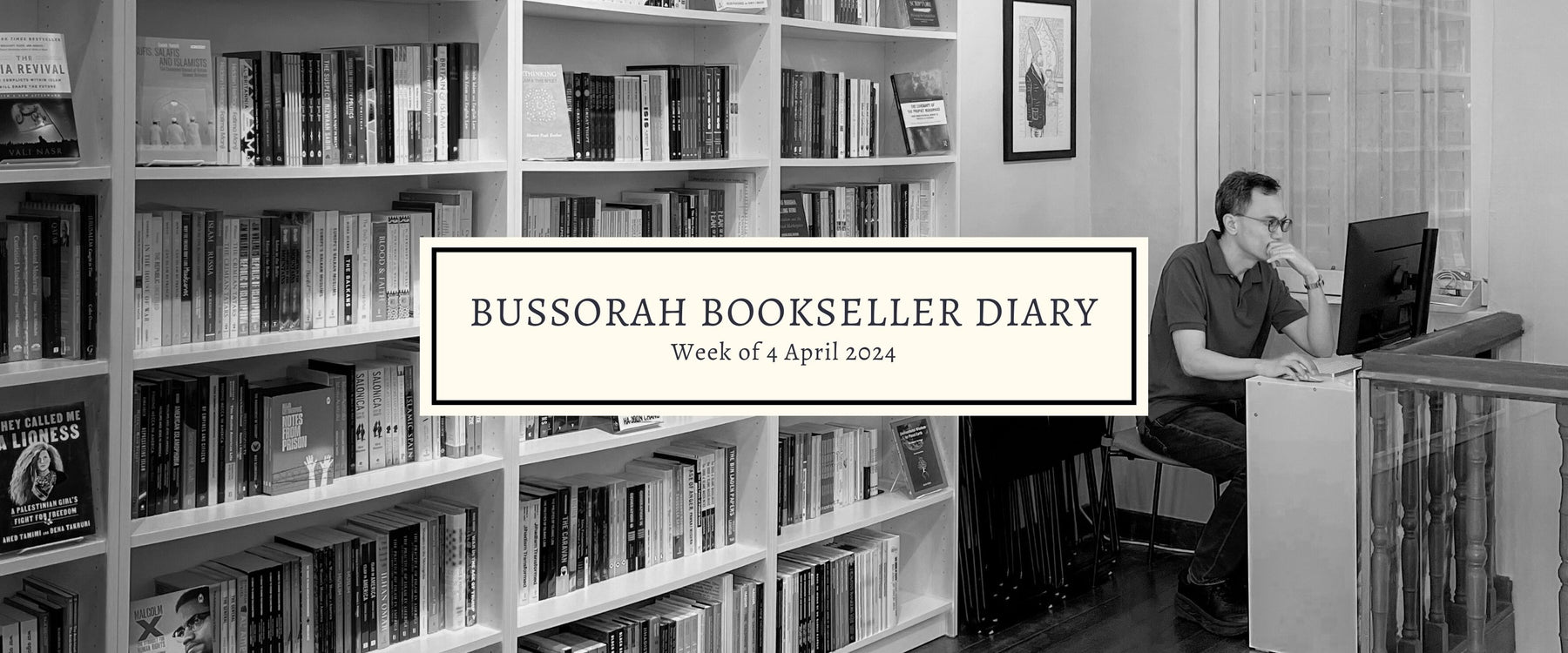in Singapore
in Singapore

Until mid-May 2024 Wardah Books is hosting two installation artworks. One by Singapore artist Isabella Ong and another by Thai artist Wantanee Siripattananuntakul. While both artists fulfil their artistic vision by making paper, their starting points cannot be more different.
The installations are curated by OH! Open House, an independent arts organisation that tells Singapore stories through in-situ art at culturally resonant precincts like Joo Chiat or Holland Village. The curators work with artists to install artworks in homes, shops, and common spaces within the precinct. This season, OH! Open House is focussing on Kampong Gelam and we are honoured to be a part of the OH! Kampong Gelam 2024 Art Walk. The art walk is a guided tour that brings participants to 12 art installations in the precinct. The guides are really good and they are very well versed in the storied and layered history of Kampong Gelam. The programme runs on weekends til 12 May 2024. You can book a spot on the tours here [Use the code "WARDAH10" for 10% off single admission tickets].
Wantanee Siripattananuntakul’s installation is a stack of papers made from the destruction of the artist’s ancestral book that dates back to the 13th century and chronicles the Zhu clan from China. Following the death of the artist’s father, the ancestral book came into the possession of the artist. In response, she pulped and reconstituted the ancient book into sheets of blank paper, turning it into a palimpsest. What is the connection to Kampong Gelam? I have not spoken with Wantanee, but her artist statement makes the link between her violent severing of ties with her ancestral past with the palimpsest that is Bussorah Street: Bussorah Street residents were relocated in the 1980s and the street was subsequently re-branded as a Middle-Eastern tourist attraction. Wantanee’s otherwise unassuming artwork is located on the second floor of the bookshop.
As for Isabella Ong, I did speak with her when she was conceptualising her response to Kampong Gelam. Isabella’s artwork, now fully realised, grapples with the very thing that gave Kampong Gelam its name: the gelam tree. The artist worked on gelam leaves, stems, and bark that had been carefully recovered from the few remaining gelam trees in the precinct, all in consultation with the national parks board. With their characteristic white clustered needle flowers, the gelam tree (Melaleuca cajuputi) was not only a feature of the landscape of Kampong Gelam, but it was also an important part of the economic and communal life here. The tree was utilised in boat-making, for firewood and its bark was even used to make paper. Yes, paper! But its most significant utility is probably in therapeutics. Cajeput oil, steam-distilled from the tree’s leaves, was traditionally used for pain relief, as a nasal decongestant, and topical antiseptic. The oil, still utilised as an ingredient in Tiger Balm, was widely sold in the shophouse apothecaries of Kampong Gelam. Cajeput oil is very similar to tea tree oil, an essential oil derived from a close relation of the gelam tree, the tea tree (Melaleuca alternifolia).
For her artwork, Isabella has used the bark of the gelam tree to make paper and has made black ink from boiling its twigs. The paper and ink neatly links the gelam tree to the precinct and its prestigious print heritage. Isabella’s installation is in two parts: the ground floor display window showcases dried pressed gelam leaves and the bottles of ink the artist had made, and upstairs suspended above our narratives section are the textured sheets of paper made from mulched gelam bark. On these sheets Isabella has drawn depictions of the stages of growth of the gelam tree from sapling to maturity based on the tree’s intrinsic fractal progression, which the artist has taken pains to study using computational mathematics.
Together, these physical artworks function as sites of conversation, confrontation, and contemplation. The artworks are effective in this function because of their physicality as opposed to being virtual or screen-based. Moreover, the act of walking (as part of the tour) from one artwork to the next within the precinct, following a path that intersects with other paths, is also a physical undertaking that reminds us that it is the function of paths to connect.
Human beings need tangible things to interact with, to dialogue with, in order to form associations and connections. It is the same with books. Physical artworks, just like physical books, take up space. They impose their presence. They embody ideas, and set context. They signify abstractions that we latch onto, and that we — as sentient beings whose primordial natures seek truth and beauty — apply to make meaning. From paper, meaning. From meaning, paper.